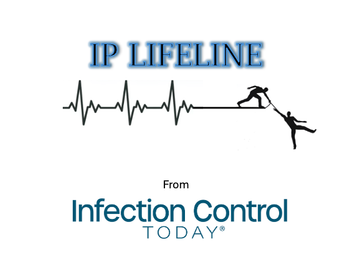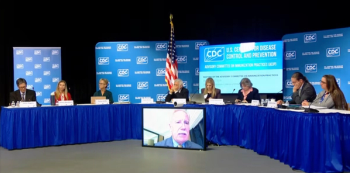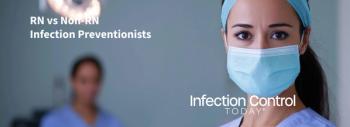
The Curtain Call: Rethinking Cubicle Curtain Protocols in Infection Prevention
Hidden in plain sight, cubicle curtains are among healthcare’s most-touched—and least regulated—surfaces. Vague “change when soiled” guidance leaves dangerous gaps, as dusty mesh headers and inconsistent replacement cycles quietly seed transmission, underscoring the need for quarterly, trackable swaps and evidence-based standards.
Introduction: A High-Touch Surface Hiding in Plain Sight
Cubicle curtains are among the most frequently touched—and often overlooked—surfaces in healthcare settings. From exam rooms to inpatient bays, they are constantly touched by patients, clinicians, and visitors. Yet, cleaning and replacement guidelines for curtains remain among the most inconsistent and least regulated aspects of environmental infection control.
Most regulatory agencies defer to internal policy when it comes to curtain changes, often stating they should be replaced “when soiled” or “after contact with infectious material.” However, these vague directives leave a dangerous gray area. Without clear mandates, practices vary widely, even within the same facility. And that inconsistency can lead to risk.
What the Guidelines Say—and Don’t Say
Despite the well-documented role of environmental surfaces in pathogen transmission, cubicle curtain guidelines remain soft.
The CDC , TheJoint Commission , and many state health departments stop short of specifying a change frequency.- Language typically reads: “Change when visibly soiled” or “after contact with infectious material or isolation patients.”
- The onus is placed on the facility to define frequency, leading to wide variability.
- Some hospitals change curtains monthly, others quarterly. In many places, it is only done when they appear dirty.
This lack of standardization creates a gap in infection prevention—one that cannot be closed without more explicit guidance and a culture of consistency.
Why Best Practice Should Be Quarterly—and Measurable
Curtains are a high-touch, low-priority item in many infection prevention plans. But they shouldn’t be.
- Studies have shown that pathogens can survive on curtain surfaces for days or even weeks, especially in high-use areas.
- Curtain changes once per quarter offer a reasonable balance between safety, cost, and operational feasibility.
- Electronic tracking systems can log change dates, issue reminders, and produce audit reports to ensure compliance.
Consistent tracking of curtain changes creates accountability across EVS, nursing, and infection prevention teams. It also makes compliance easily auditable for regulatory visits.
The Rise of Cubicle Curtain Commercialization
The cubicle curtain industry has evolved dramatically in recent years:
- Traditional cloth curtains that are laundered between uses
- Disposable curtains (eg, from On The Right Track or Standard Textile) that are designed for extended multimonth use, not single use
- Color-coded systems to distinguish usage cycles or infection risk
- Hybrid systems that blend reusable mesh with replaceable curtain panels
Many hospitals have outsourced curtain changes to third-party vendors. Some of these vendors provide barcoded cloth curtains that are laundered and scanned in and out for tracking. Others focus on programs that replace only the curtain panel, leaving the mesh in place. This is a growing and concerning practice.
While outsourcing this task is understandable given staffing and workflow constraints, it is critical to partner with companies that understand infection prevention standards. That includes adherence to hand hygiene, clean vs dirty transport practices, and proper curtain-handling protocols during change-outs.
Manufacturers who promote snap-on curtain systems often do so to support these outsourced models. While efficient, these systems are designed for ease of change—not necessarily for infection prevention. Without specific guidance on how to clean or replace the mesh, this approach may inadvertently undermine patient safety.
As demand grows, so does innovation—and not all innovations are created equal.
The Mesh Problem: Dust, Disturbance, and Risk
Some newer systems feature a snap-out panel that allows the curtain to be changed while leaving the mesh header intact. While this may reduce labor and laundry costs, it introduces a critical oversight.
- Mesh is located at the ceiling to allow for sprinkler deployment and smoke detection, but it is often excluded from cleaning protocols.
- It collects dust, which can harbor pathogens such as Clostridioides difficile, Methicillin-resistant Staphylococcus aureus (MRSA), Vancomycin-resistant Enterococcus(VRE), Acinetobacter baumannii, and Candida auris, as well as viruses such as influenza and SARS-CoV-2. Studies have also identified bacteria such as Bacillus, Staphylococcus, and Pseudomonas; fungi such as Aspergillus, Penicillium, and Alternaria; and even viral particles such as influenza in health care dust samples.
- Movement of the curtain during daily use can disturb this dust, potentially dispersing harmful particles into the air.
“If we wouldn’t leave an HVAC vent uncleaned for a year, why are we okay ignoring the curtain mesh that hangs inches from a patient’s headspace?”
While the mesh is overhead, its contamination still poses a risk, especially in spaces where airflow can redistribute particulate matter.
Recent testing by On the Right Track Systems, using AATCC Test Method 100, evaluated traditional curtain mesh headers for contamination. The results were concerning:
- Against Acinetobacter baumannii, the mesh only demonstrated a 55% reduction in bacterial growth after 24 hours—indicating significant survival of a known multidrug-resistant organism. To be clear, a 55% reduction is not considered a safe reduction in bacterial load. For disinfectants used on soft surface textiles,
the EPA recommends testing for a minimum mean 4.0-log reduction in qualifying bacteria relative to controls within 10 minutes ± 5 seconds. A 4.0 log reduction is 99.99%. - Against C auris, a high-concern fungal pathogen, a 99.8% reduction was seen, but residual contamination remained at 5.0 x 10^5 CFU/sample after 24 hours.
These findings confirm that curtain mesh can harbor and retain pathogens, reinforcing the need for validated cleaning or replacement protocols.
Leaving mesh behind may save money, but without a validated cleaning protocol or replacement cycle, it compromises the very infection control goals these systems aim to support.
Time for Data, Time for Standards
There is a clear need for:
- More research on mesh contamination, including microbial load and dust analysis
- Evidence-based guidance on how frequently mesh should be cleaned or replaced
- Collaboration between infection prevention experts and curtain vendors to validate new systems before broad adoption
Infection prevention teams, environmental services leaders, and hospital administrators must work together to demand better data and push for tighter regulatory standards. This is not just a product issue; it is a patient safety issue.
Conclusion: Curtains Are Not Cosmetic—They Are Clinical
Cubicle curtains are not decorative elements. They’re functional, high-contact surfaces that play a direct role in infection transmission—and they must be treated as such.
As with other surfaces, one truly should view a building or similar spaces and its surfaces
As innovation in this space continues, the health care industry must balance efficiency with safety. Without clear policies, defined cycles, and validation of new curtain systems (including mesh), we risk letting convenience overtake care.
The industry needs leadership. It needs data. Most of all, it needs to stop treating cubicle curtains like an afterthought. Because when it comes to infection prevention, there is no room for gray areas—only clean lines.
Newsletter
Stay prepared and protected with Infection Control Today's newsletter, delivering essential updates, best practices, and expert insights for infection preventionists.






